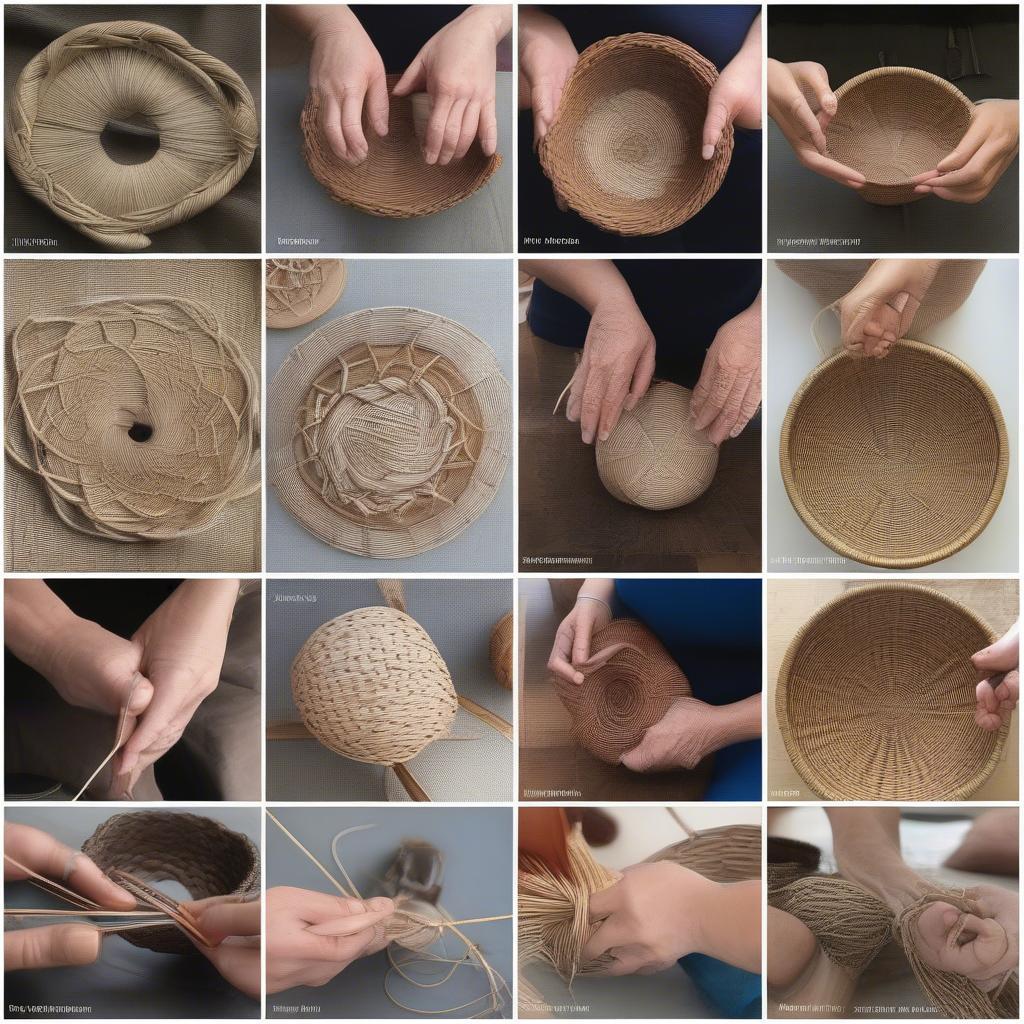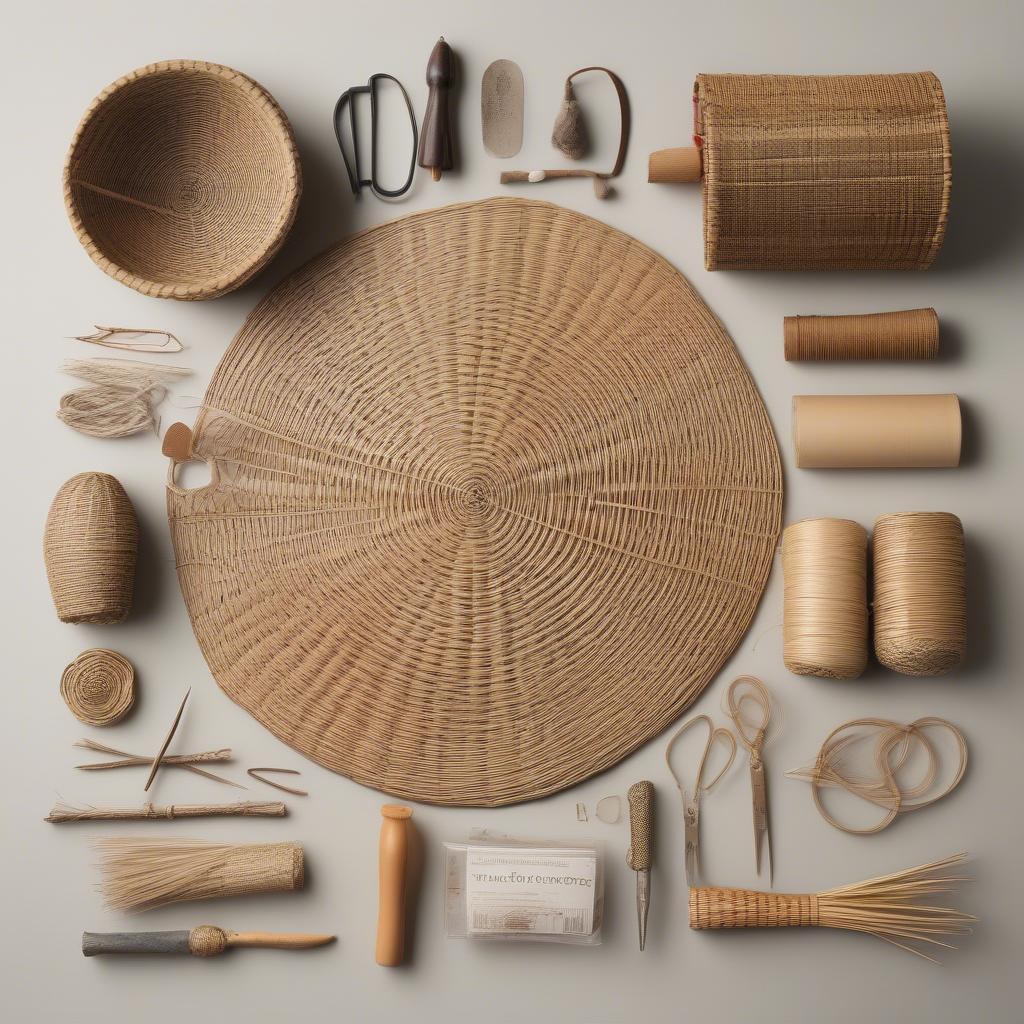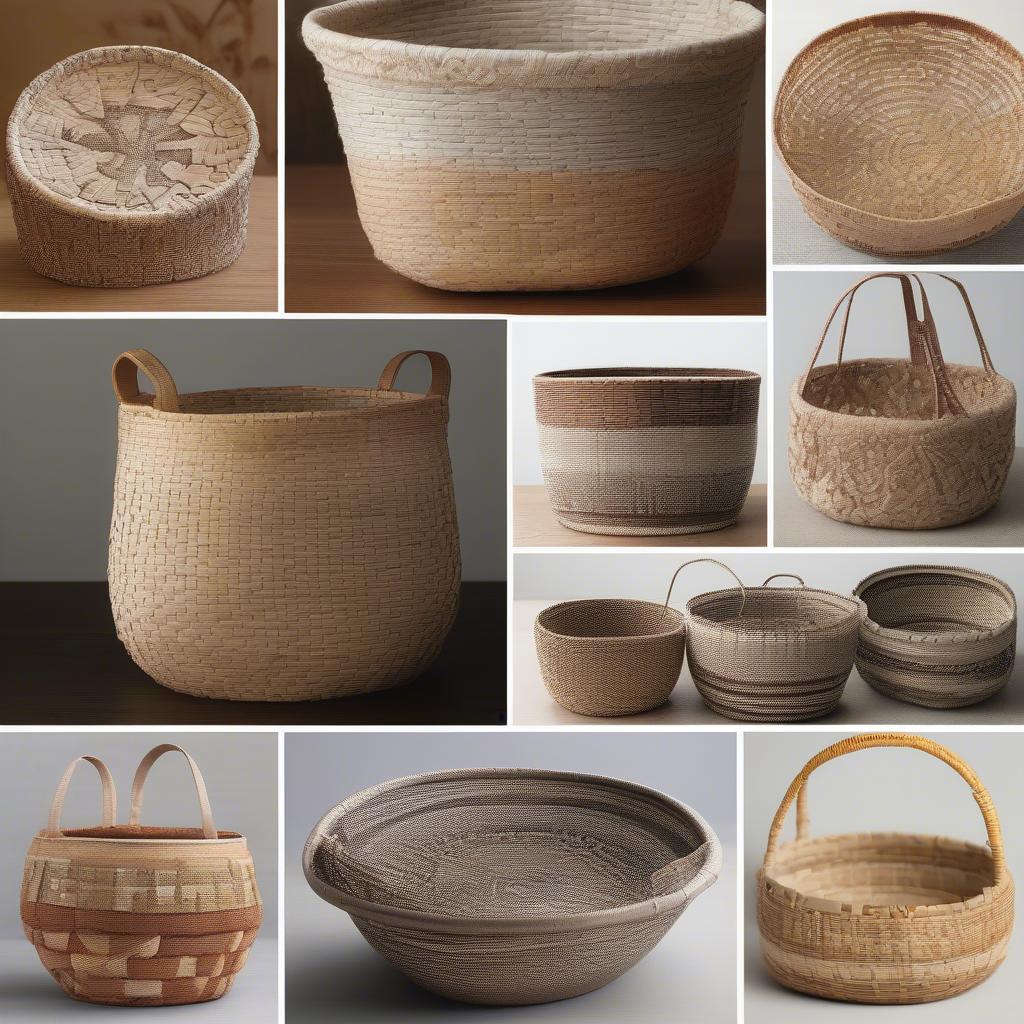Basket Weaving
Mastering the Art of Round Basket Weaving
Round Basket Weaving is a timeless craft that has captivated artisans for centuries. From simple gathering baskets to intricate decorative pieces, the circular form offers a unique canvas for creativity and functionality. This guide delves into the world of round basket weaving, exploring its history, techniques, materials, and inspiring you to create your own beautiful woven masterpieces.  Various Round Basket Weaving Techniques
Various Round Basket Weaving Techniques
A Journey Through Time: The History of Round Basket Weaving
Basket weaving is one of humanity’s oldest crafts, predating pottery and even textiles. Early round baskets, woven from readily available natural materials like reeds, grasses, and vines, served practical purposes for foraging, storage, and carrying. Over time, round basket weaving evolved beyond its purely utilitarian roots, becoming an art form expressing cultural identity and artistic skill. basket weaving pattern pdf Different cultures developed unique round basket weaving traditions, resulting in a stunning array of styles, patterns, and materials.
From the intricate coiled baskets of Native American tribes to the sturdy wicker baskets of Europe, each region’s basketry reflects its unique environment and cultural heritage. Round baskets hold a special significance in many cultures, often symbolizing unity, wholeness, and the cyclical nature of life.
Essential Techniques in Round Basket Weaving
Several fundamental techniques form the basis of round basket weaving. Understanding these techniques is crucial for crafting beautiful and durable baskets.
- Coiling: This technique involves wrapping a flexible material, like grass or raffia, around a core material, often a bundle of reeds or grasses. The coils are then stitched together to create the basket’s shape.
- Twining: Twining involves weaving two or more weavers around a series of vertical stakes, creating a tight and sturdy basket structure.
- Wicker Weaving: This technique utilizes long, flexible materials like wicker or rattan, woven over and under each other to form the basket’s sides and base.
 Essential Materials for Round Basket Weaving
Essential Materials for Round Basket Weaving
Each technique offers its own set of advantages and aesthetic possibilities, allowing for a wide range of basket designs. Mastering these techniques requires patience, practice, and a keen eye for detail.
“The beauty of round basket weaving lies in its simplicity and versatility,” says renowned basket weaver, Anya Petrova. “With just a few basic materials and techniques, you can create functional and artistic pieces that will last for generations.”
Choosing the Right Materials
The materials used in round basket weaving are as diverse as the cultures that practice it. Natural materials like rattan, willow, seagrass, and reed are popular choices, each offering unique properties and textures. Rattan’s strength and flexibility make it ideal for creating sturdy baskets, while willow’s delicate nature lends itself to finer, more intricate designs. basket weave placemat target Selecting the right materials depends on the desired functionality and aesthetic of the finished basket.
Getting Started: A Beginner’s Guide to Round Basket Weaving
Starting with round basket weaving can seem daunting, but with the right resources and guidance, it’s an accessible and rewarding craft. Begin with a simple project, like a small coiled basket, to familiarize yourself with the basic techniques. aboriginal basket weaving workshops 2019 As you gain experience, you can experiment with more complex designs and materials. Numerous online tutorials, workshops, and books can provide valuable instruction and inspiration.
What are some common round basket weaving patterns?
Common patterns include the basic weave, twill weave, and herringbone weave. These patterns create different textures and visual interest in your baskets.
How do I start a round basket base?
Starting a round base often involves creating a small woven disc or using a pre-made base. Techniques like the “plaiting” or “scalloming” method can be used to establish the circular foundation.
“Don’t be afraid to experiment with different materials and techniques,” advises expert basket maker, James Weaver. “The joy of basket weaving is in the process of discovery and creation.”
 Examples of Finished Round Baskets
Examples of Finished Round Baskets
Conclusion: Embrace the Art of Round Basket Weaving
Round basket weaving offers a fulfilling creative outlet, connecting us to a rich history of craft and artistry. Whether you’re drawn to its practical applications or its artistic potential, round basket weaving is a skill worth exploring. So, gather your materials, embrace the process, and embark on your own round basket weaving journey.
FAQ:
- What is the best material for beginners? Rattan is a good starting point due to its strength and flexibility.
- Where can I find round basket weaving patterns? Online resources, books, and craft stores offer a wealth of patterns.
- What tools do I need for round basket weaving? Basic tools include an awl, clippers, and a soaking container for your materials.
- How long does it take to weave a round basket? The time varies depending on the size and complexity of the basket.
- Can I use recycled materials for basket weaving? Yes, materials like newspaper or fabric scraps can be incorporated into your designs.
Are there any online resources for learning round basket weaving? Yes, numerous websites and YouTube channels offer tutorials and demonstrations.
columbia major underwater basket weaving
For further inspiration, explore our articles on specific basket weaving techniques and projects.
Need assistance with your round basket weaving projects? Contact our 24/7 customer service team at +84 388 951 999, or visit us at our locations in Hanoi, Vietnam or Tech Avenue, Suite 12, San Francisco, CA 94105, USA.
